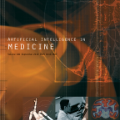The objective of this paper is to develop and evaluate a directional vibrotactile feedback interface as a guidance tool for postural adjustments during work. In contrast to the existing active and wearable systems such as exoskeletons, we aim to create a lightweight and intuitive interface, capable of guiding its wearers towards more ergonomic and healthy working conditions. To achieve this, a vibrotactile device called ErgoTac is employed to develop three different feedback modalities that are able to provide a directional guidance at the body segments towards a desired pose. In addition, an evaluation is made to find the most suitable, comfortable, and intuitive feedback modality for the user. Therefore, these modalities are first compared experimentally on fifteen subjects wearing eight ErgoTac devices to achieve targeted arm and torso configurations. The most effective directional feedback modality is then evaluated on five subjects in a set of experiments in which an ergonomic optimisation module provides the optimised body posture while performing heavy lifting or forceful exertion tasks. The results yield strong evidence on the usefulness and the intuitiveness of one of the developed modalities in providing guidance towards ergonomic working conditions, by minimising the effect of an external load on body joints. We believe that the integration of such low-cost devices in workplaces can help address the well-known and complex problem of work-related musculoskeletal disorders.
翻译:本文的目的是开发并评价一个方向性振动活性反馈界面,作为工作期间进行后院调整的指导工具; 与Exoskeletons等现有活跃和可磨损的系统相比,我们的目标是建立一个轻量和直观的界面,能够引导其磨损人员走向更具有人文工程学和健康的工作环境; 为此,使用一个称为ErgoTac 的振动活性装置来开发三种不同的反馈模式,能够在身体部分提供方向性指导,以达到理想的姿势; 此外,还进行了一项评估,以便为用户找到最合适、舒适和直观的反馈模式; 因此,这些模式首先以实验方式对带有8个ErgoTac 装置的15个科目进行对比,以达到目标性手臂和托尔索配置; 然后,在一系列实验中对5个主题进行最有效的方向性反馈模式进行评估,在这一实验中,一个叫做 性磁性优化优化的优化优化优化的组合模块可以提供最能化的身体状态,同时进行重的提升或强力施压任务; 其结果有力地证明,一个具有最小性机体外机体构造的内机体型结构的不稳定性能效果,从而相信这种机型模式具有最低性的工作环境结构。




